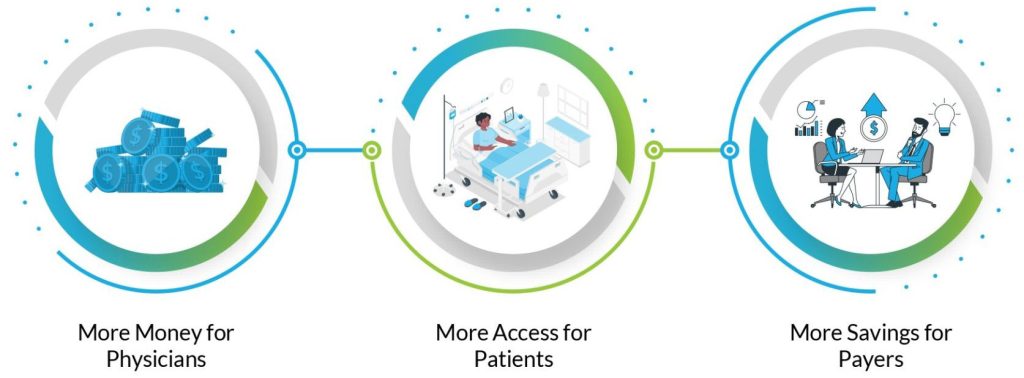Skip to content
Winds of change in Healthcare
How do we make money?
- Although commercial insurers operate under a model where cost-saving incentives are less pronounced due to the nature of their risk pooling and premium structures, self-insured entities, by contrast, possess a direct economic motivation to minimize health care expenditures, as these costs directly impact their financial outlays
- The self insured market comprises 25-30% of the total US Healthcare market.
- In 2022, the US spent $4.5 trillion on healthcare
- Some of the commonest surgical problems may be offered in the office, the evidence supports safety, the cost reduction is >5-10X
We Amplify Care by Moving Surgery to the Doctors office, Reducing Costs
Invest in the Future of Healthcare
Case Example
- In the context of Carpal Tunnel Release procedures, where hospital-based costs can escalate to $10,000, transitioning these surgeries to an office setting could reduce expenses to approximately $2,000, including an adjusted surgeon’s fee to accommodate the in-office environment. This shift results in a potential savings of $8,000 per procedure for self-insured companies.
- If we consider an intermediary like Walant Surgical Solutions, which captures a portion of the savings—say, $200 per case—this model could generate $120 million annually, given the 600,000 annual procedures in the U.S.
- Extrapolating this scenario across numerous analogous medical procedures highlights a significant economic incentive for self-insured entities to restructure care delivery, potentially unlocking substantial cost efficiencies and revenue streams for facilitators like Walant Surgical Solutions.


